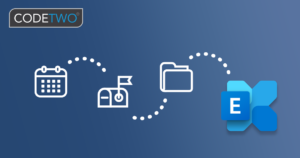In today’s digital age, businesses are constantly seeking more efficient ways to manage their email and communication systems. One of the popular choices for email hosting is MDaemon, a reliable mail server software known for its features and stability. However, as organizations grow and their needs evolve, many are making the move to cloud-based solutions like Microsoft Office 365. This article explores the process of migrating from MDaemon to Office 365, ensuring a smooth transition without data loss or service disruptions.
Introduction to Office 365 Migration
Migrating from MDaemon to Office 365 is a strategic decision that can significantly improve an organization’s productivity and collaboration capabilities. Office 365 offers a wide range of cloud-based services, including email, file storage, and productivity applications like Microsoft Word, Excel, and PowerPoint. This shift to the cloud provides numerous benefits, such as scalability, accessibility, and simplified management.
Why Migrate to Office 365?
There are several compelling reasons to migrate from MDaemon to Office 365:
- Scalability: Office 365 allows organizations to easily scale their email and collaboration services as their business grows. You can add or remove user licenses as needed, ensuring that you pay only for what you use.
- Accessibility: With Office 365, users can access their email and files from anywhere with an internet connection, promoting remote work and productivity.
- Security: Microsoft invests heavily in security measures to protect Office 365 users from threats like phishing, malware, and data breaches. This provides peace of mind for businesses concerned about their data’s safety.
- Collaboration: Office 365 offers a suite of collaboration tools like Microsoft Teams, SharePoint, and OneDrive, making it easier for teams to work together on projects and documents in real time.
Now that we understand the advantages of migrating to Office 365, let’s delve into the step-by-step process of transitioning from MDaemon to Office 365.

Preparing for Migration
A successful migration to Office 365 requires careful planning and preparation. Here are the essential steps to get started:
Assess Your Current MDaemon Setup
Before initiating the migration, assess your existing MDaemon environment. This includes:
- User accounts: Document all user accounts and their associated email addresses.
- Mailbox sizes: Determine the size of each mailbox, as this information will help you choose the right Office 365 plan.
- Aliases and distribution lists: Note any email aliases or distribution lists that need to be recreated in Office 365.
Choose the Right Office 365 Plan
Office 365 offers several plans tailored to different business needs. Select a plan that aligns with your organization’s requirements in terms of storage, collaboration tools, and pricing.
Back-Up Your MDaemon Data
Before making any changes, it’s crucial to back up your MDaemon data. This ensures that your data is safe in case of unexpected issues during the migration process.
Notify Your Team
Inform your team about the upcoming migration. Provide them with clear instructions on what to expect and any actions they need to take, such as changing their email settings.

Performing the Migration
With the groundwork laid, let’s move on to the actual migration process. Depending on your specific requirements and preferences, there are several methods to migrate from MDaemon to Office 365. You can also read Why My Outlook Email Not Working?
IMAP Migration
IMAP (Internet Message Access Protocol) migration is a common method for moving email data from MDaemon to Office 365. Here’s how it works:
- Enable IMAP on MDaemon: Ensure that IMAP is enabled on your MDaemon server.
- Create Office 365 Mailboxes: Set up user mailboxes in Office 365 for each MDaemon user.
- Configure Email Clients: Configure email clients (e.g., Outlook) to connect to both MDaemon and Office 365 accounts.
- Copy Emails: Using the email client, copy emails from MDaemon to Office 365. This process may take some time, depending on the amount of data to be migrated.
- Final Sync: Once all data is copied, ensure that the Office 365 mailbox is up to date. You can then decommission MDaemon.
Third-Party Migration Tools
There are several third-party migration tools available that can simplify the migration process. These tools often offer features like automated mailbox mapping and real-time syncing. Some popular options include BitTitan, SkyKick, and MigrationWiz.
Hybrid Deployment
For organizations with complex email requirements, a hybrid deployment may be the best solution. This approach involves maintaining both MDaemon and Office 365 during the migration process, allowing for a gradual transition.
Post-Migration Tasks
Once the data has been successfully migrated to Office 365, there are some important post-migration tasks to complete:
Verify Data Integrity
Ensure that all email messages, contacts, calendars, and other data have been migrated accurately. Test user accounts to confirm that everything is functioning as expected.
Update DNS Records
Update your DNS (Domain Name System) records to point to Office 365. This step is crucial for ensuring that emails are routed correctly to the new platform.
Train Your Team
Provide training and support to your team on how to use Office 365 effectively. Familiarize them with the new features and tools available.
Decommission MDaemon
Once you are confident that the migration to Office 365 is successful and all data has been transferred, you can decommission MDaemon and shut down your old email server.
Conclusion
Migrating from MDaemon to Office 365 is a strategic move that can bring numerous benefits to your organization. From scalability and accessibility to enhanced security and collaboration capabilities, Office 365 offers a comprehensive solution for modern businesses.
To ensure a smooth migration process, remember to assess your current setup, choose the right Office 365 plan, back up your data, and communicate effectively with your team. Whether you opt for IMAP migration, third-party tools, or a hybrid deployment, careful planning and execution will minimize disruptions and maximize the benefits of your transition to Office 365.
In conclusion, embracing the cloud with Office 365 can propel your organization into a more efficient and productive future, providing the tools and resources needed to thrive in today’s competitive business landscape. So, don’t hesitate to make the move and reap the rewards of a quick MDaemon to Office 365 migration.

